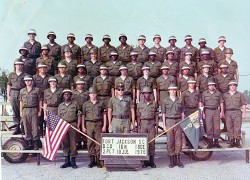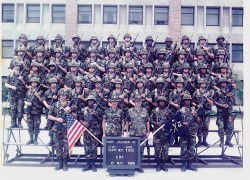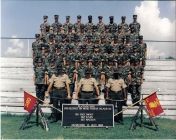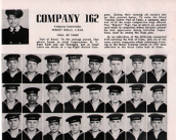Specialty Summary. Performs and manages occupational and environmental health (OEH)-related activities to support delivery of Air Force Medical Service (AFMS) and BE capabilities.
Duties and Responsibilities:
Ensures delivery of BE capabilities at the tactical level as outlined below:
Execute medically related vulnerability assessment. Coordinate with members of Force Protection Working Group (FPWG) to identify critical infrastructure and operational components of base or location. In conjunction with the Threat Working Group (TWG), use existing sources of information (intelligence, previous vulnerability studies, Environmental Protection Agency reports, etc.) to identify potential threats to critical nodes. Assess overall vulnerability to critical nodes given threats, probability or occurrence, and consequence of effects. Provide recommendations through FPWG to reduce overall vulnerability/risk to mission.
Identify and approve potable and non-potable water sources. Analyze surface, ground and local supplier sources to determine drinking water quality and health risks associated with non-potable water quality for garrison and deployed operations. Recommend feasible solutions to address health concerns to facilitate approval of use. Scope of analysis is determined by immediacy of need, duration of need and population demographics.
Execute Occupational & Environmental Health Site Assessment (OEHSA). The key operational health tool for producing data or information used for health risk assessments (HRA) and to satisfy OEH surveillance requirements. OEHSAs focus on collecting site-specific data to identify potential or actual exposure pathways during bed down, employ, and sustainment of air and space forces. OEHSAs are also the mechanism for providing OEH inputs to the development of base support and expeditionary site plans and each service member’s longitudinal exposure record (LER).
Identify potential operating locations. Coordinate with Plans communities and retrieve intelligence to address OEH threats associated with potential garrison or deployed operating locations. This capability is most appropriately executed during the planning phase, but if necessary can be executed at any time.
Conduct predictive exposure assessments. Use data, intelligence products and modeling information collected in garrison as a baseline for predicting potential OEH exposures across the range of military challenges and operations.
Respond to OEH health threats. Effectively and efficiently respond to both deliberate and crisis events which may result in actual or potential exposure to OEH health threats. Document information regarding actual or potential exposure from OEH incidents as part of the LER
Identify OEH health hazards. Effectively and efficiently anticipate and recognize actual or potential chemical, biological, radiological, nuclear and physical (OEH) health threats.
Link weapons effects with health risk to potentially exposed personnel. Work with Emergency Management personnel, Explosive Ordnance Disposal, and other base personnel to identify OEH hazards associated with different weapons effects. Working through TWG, identify probable weapons and assist with planning phases for posturing efforts, incorporating potential health risk as a result of attack due to residual effects of weapons (OEH hazards versus direct blast effects). Proficiency in this capability will allow easy translation from defensive to offensive operations if asked to address collateral damage input in an air tasking order.
Analyze OEH health hazards. Effectively and efficiently evaluate actual or potential chemical, biological, radiological, nuclear and physical (OEH) health threats.
Manage samples. Collecting, handling, preserving, packaging, shipping, transporting or escorting samples associated with deliberate and crisis responses at garrison or deployed locations.
Conduct exposure investigations. Evaluates post exposure investigations through interviews, re-creation, modeling, post-exposure medical exams and knowledge of processes of AF work centers, implement controls and resultant health affects to document human health threats. Uses results to reduce risks in future operations and other similar and concurrent operations through recommendations to commanders. Documents known operational impacts (maximizing positive impacts and minimizing negative impacts).
Control OEH health hazards. Provide control recommendations and advocate for the installation’s use to eliminate or mitigate actual or potential chemical, biological, radiological, nuclear and physical (OEH) health threat.
Provide protective postures in counter-chemical, biological, radiological, nuclear, and explosive (CBRNE) operations. Using information from gathered intelligence, vulnerability assessments, OEHSAs and incident-specific data,
provide relevant threat control recommendations to the commander with respect to real-time and future operations. Apply the OEH hazard control hierarchy, using engineering, administrative and personal protective equipment as the operations dictate.
Assist with shelter management. Determine adequacy of collective protection for controlling OEH health threats, as requested. Perform health risk assessment to determine ability to release personnel from collectively protected facilities.
Associate exposure with affected personnel. Document information regarding identification, evaluation and control of actual or potential OEH health hazards as part of the LER. Tie completed or potentially completed exposure pathways to individuals using spatial and temporal reference marks.
Assist with health risk management. Advise decision makers in a decision-making process to evaluate and select courses of action (COAs), minimize OEH risks, and maximize benefits for operations and missions. This is the health component of the Operational Risk Management (ORM) process and health risk management (HRM) recommendations and decisions are integrated into the commander’s ORM decision-making.
Communicate OEH risk-based information and recommend COAs. Effectively communicate potential health effects, outcomes, and control measures. Provide information consistent with the HRA. Use knowledge of processes of AF work.
Specialty Qualifications:
Knowledge. Knowledge is mandatory of basic and applied mathematics, basic chemistry, physics and computer usage, industrial hygiene, community drinking water surveillance, occupational health, radiological health, environmental protection, medical administration, and bioenvironmental engineering aspects of medical readiness.
Education. For entry into this specialty, completion of an Algebra I course in high school is mandatory. Completion of high school courses in Algebra II, physics, chemistry, biology, and English composition is desirable.
Training. For award of AFSC 4B031, completion of the basic bioenvironmental engineering specialist course is mandatory.
Experience. The following experience is mandatory for award of the AFSC indicated:
AFSC 4B051. Qualification in and possession of AFSC 4B031. Also, experience in conducting bioenvironmental engineering evaluations and surveys.
AFSC 4B071. Qualification in and possession of AFSC 4B051. Also, experience performing and supervising industrial hygiene, occupational health, environmental protection, medical readiness and radiological health surveys to include the preparation of all related correspondence, reports, and charts.
AFSC 4B091. Qualification in and possession of AFSC 4B071. Also, experience managing industrial hygiene, community environmental surveillance, and radiological health programs.
Other. The following are mandatory for entry into this specialty: Normal color vision as defined in AFI 48-123, Medical Examinations and Standards. Qualification to operate government vehicles according to AFI 24-301, Vehicle Operations. A minimum age of 18 years prior to entry into technical training. For award and retention of AFSCs 4B051/71/91/00, must maintain an Air Force Network License according to AFI 33‑115, Vol 2, Licensing Network Users and Certifying Network Professionals.




